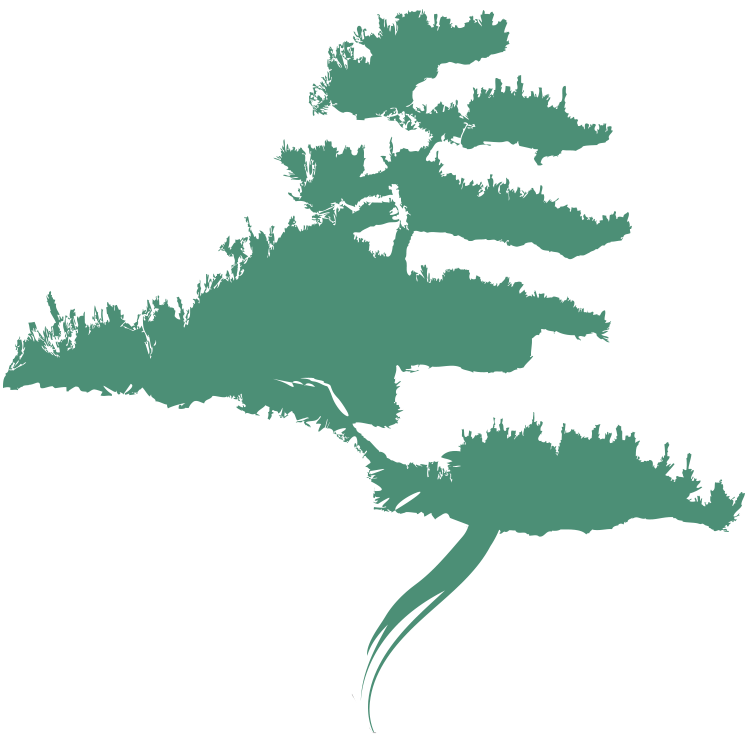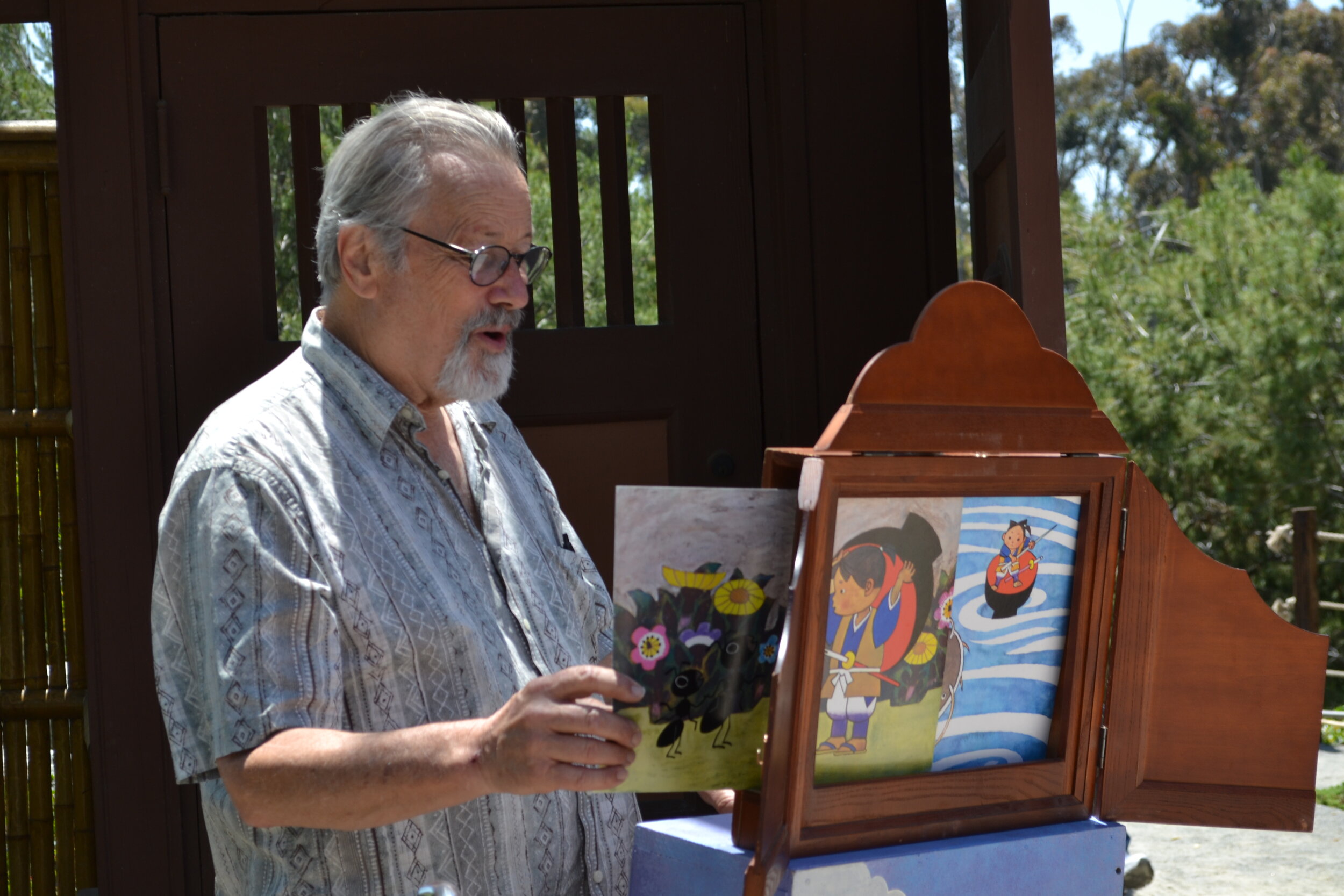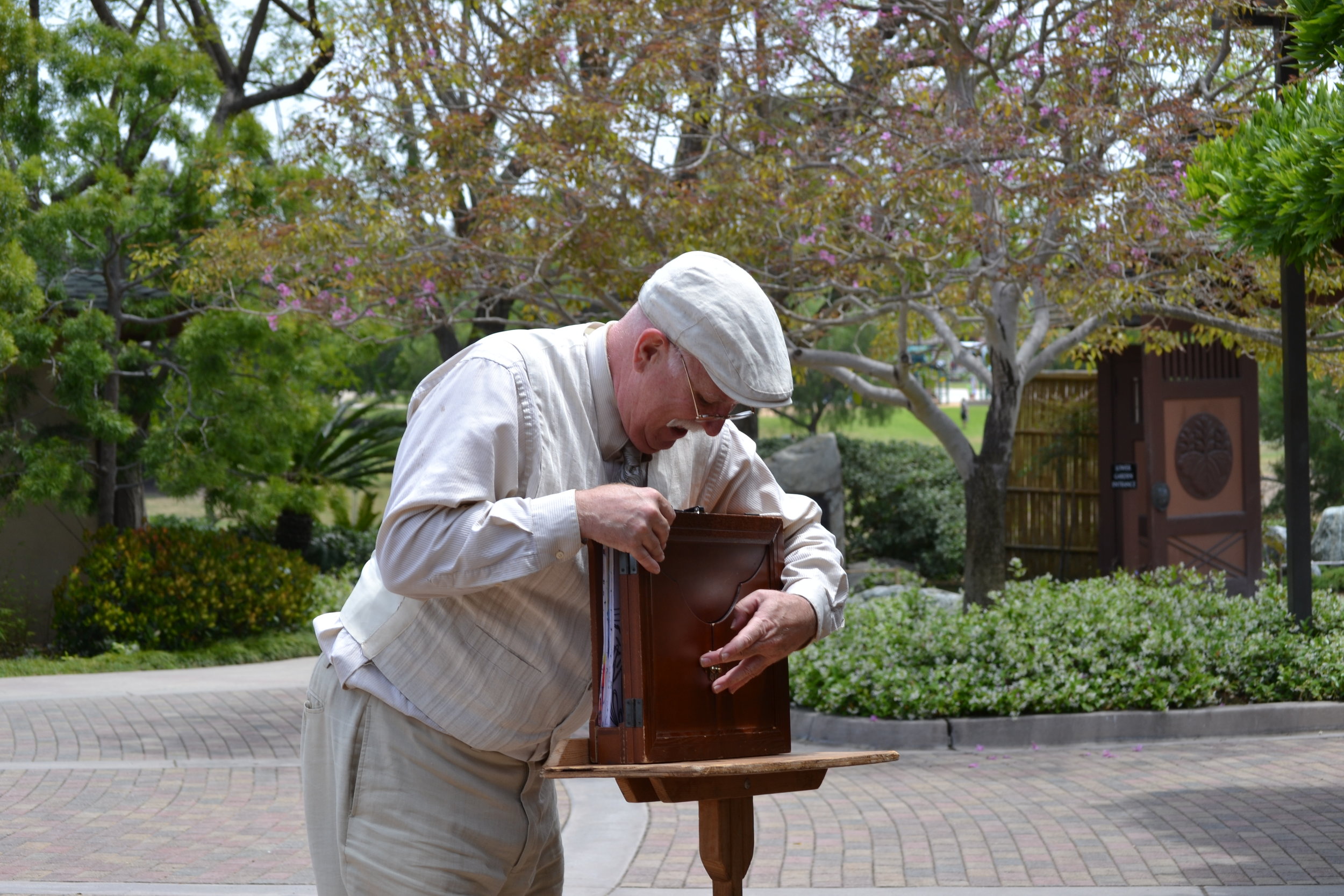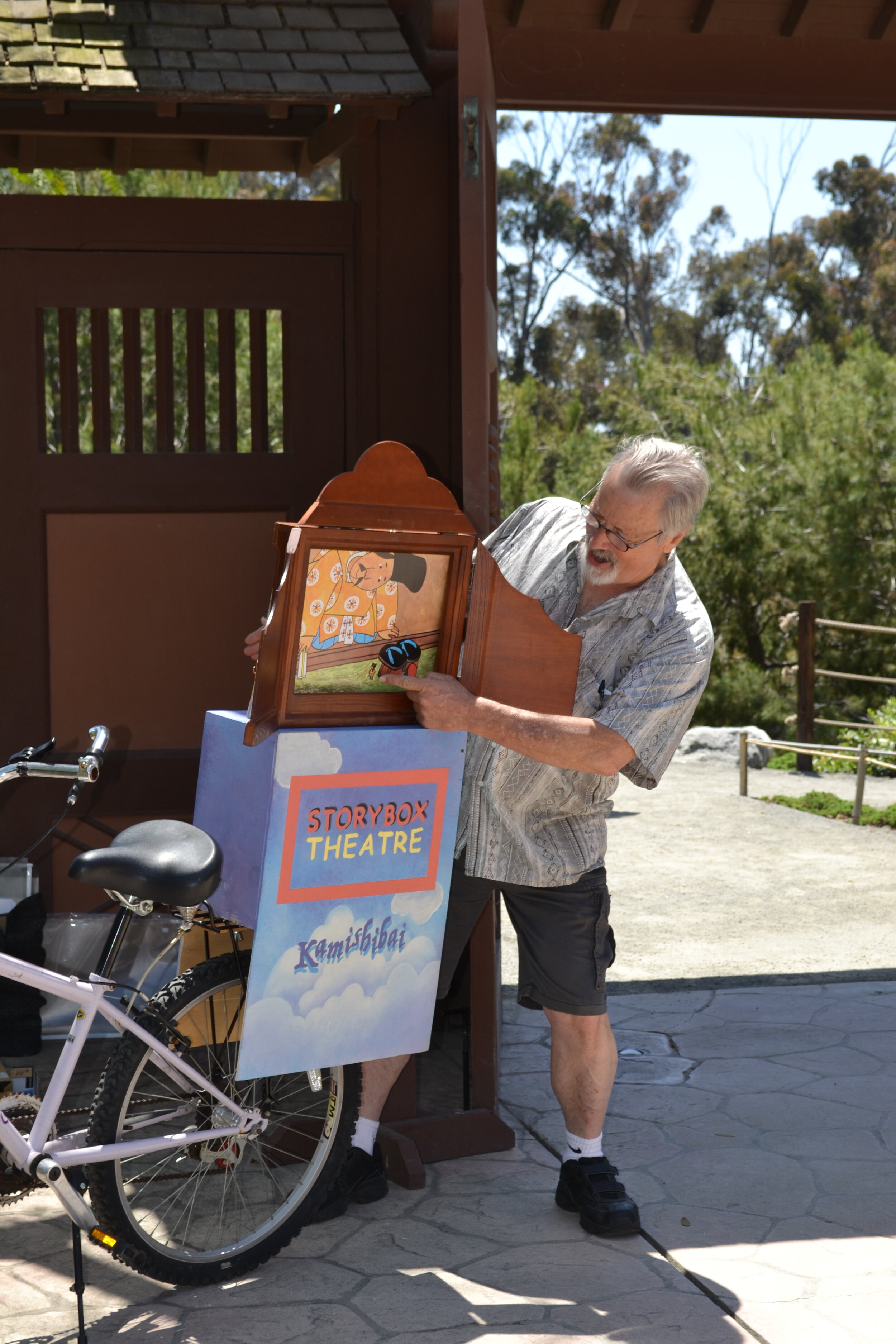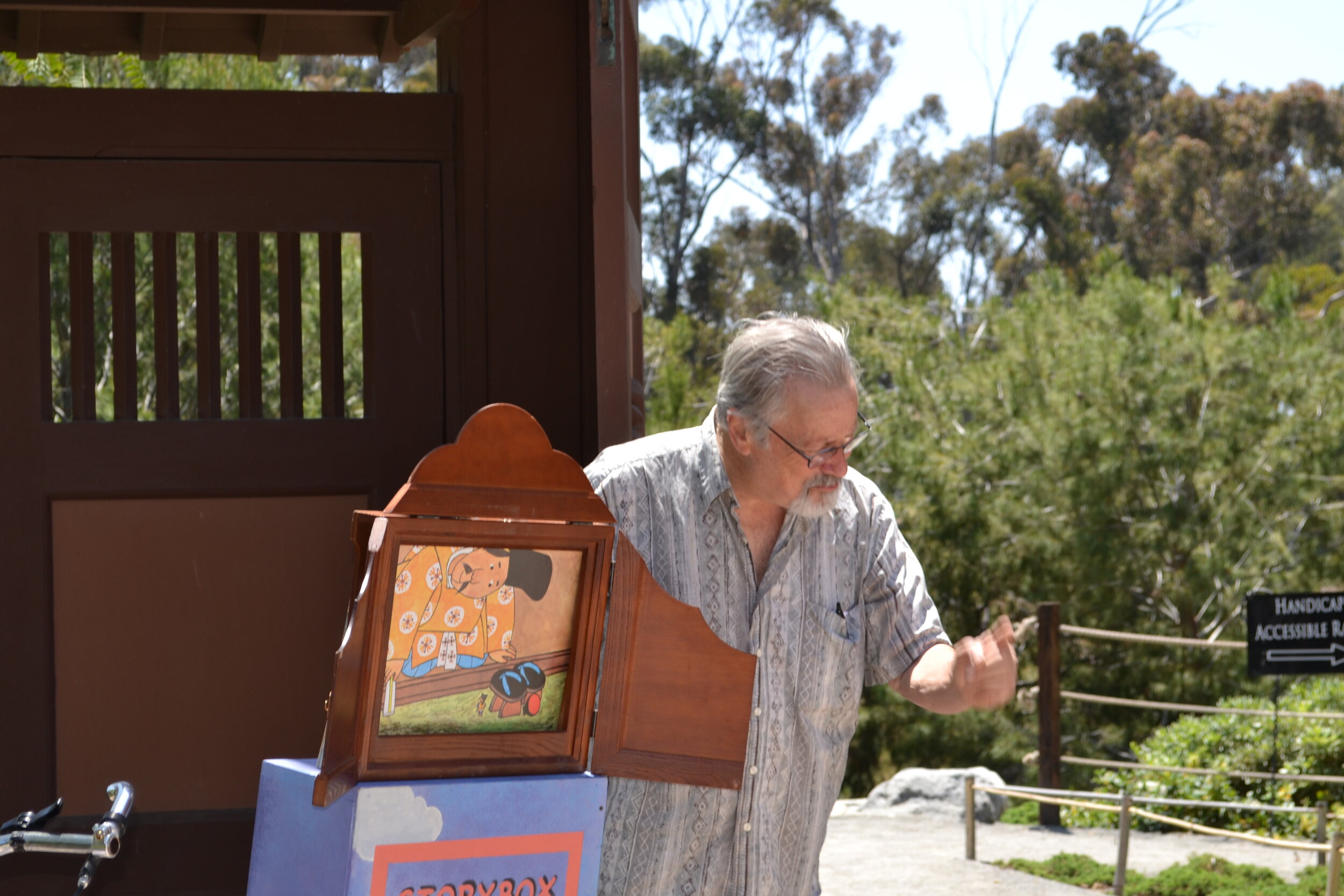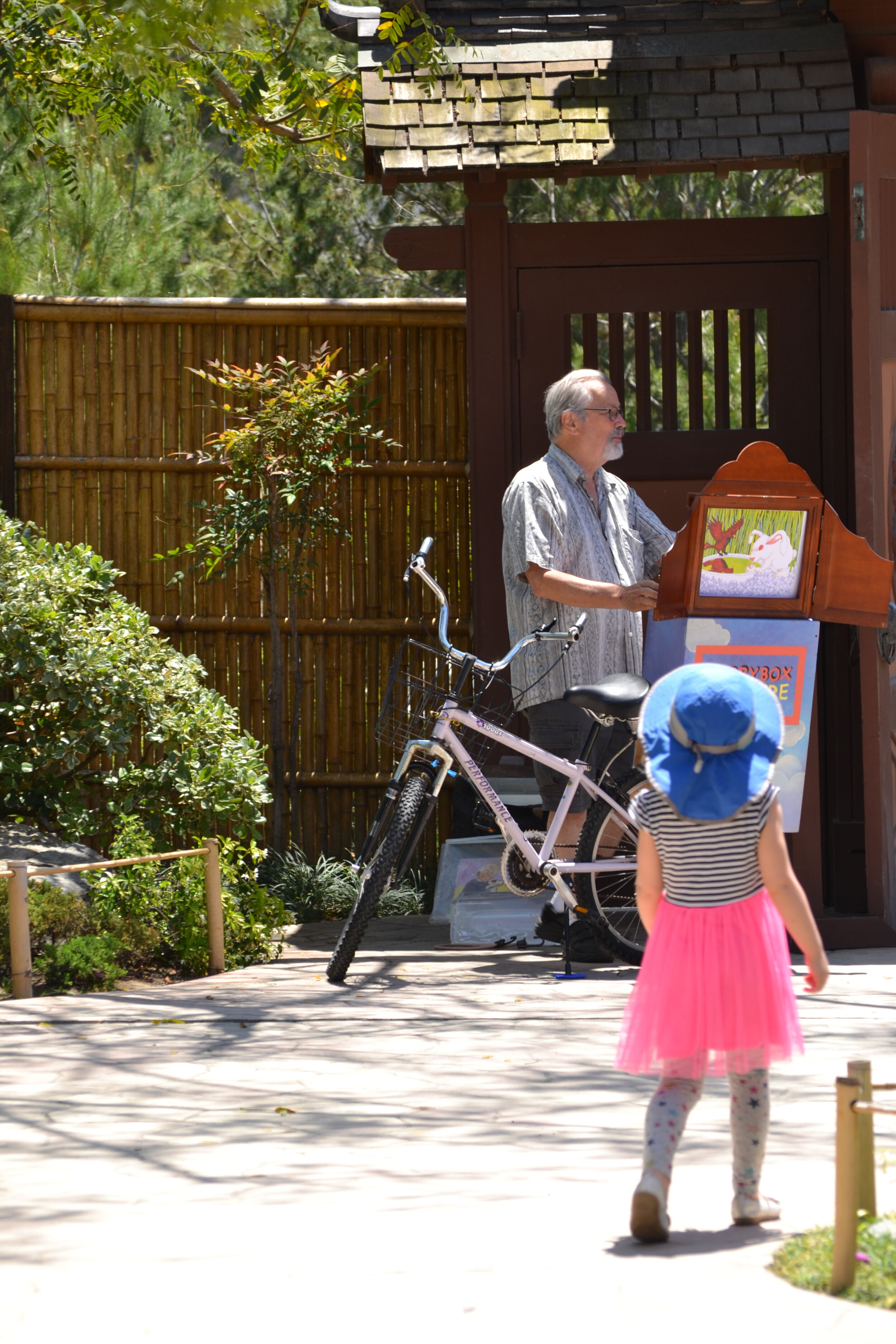Kamishibai (kah-mee-shee-bye), which means “paper theatre,” was first performed on the streets of Tokyo in 1930. Its storytelling forebears were both ancient and modern; domestic and foreign. Influences as venerable as 9th century Buddhist monks and as salacious as foreign silent films both had powerful impact on its development. The history of kamishibai is a fascinating story that starts in the Shitamachi district of Tokyo and spreads rapidly throughout Japan. It flourished through the 1930s, adapted and grew through the wartime period; expanded under American occupation to 50,000 kamishibai-ya (kamishibai-men) presenting their stories and selling their handmade candies to children all over Japan. Even a technological invasion could not destroy it, though television tried in the early 1950s. Today kamishibai continues to thrive not only in Japan, but in 50 countries around the world as well.
Walter Ritter
Walter Ritter has presented kamishibai stories all over San Diego County in classrooms and libraries since 1913. He is Executive Director of Write Out Loud, the theatre company that reads literature aloud to audiences of all ages and which features kamishibai as a core program under the name of StoryBox Theatre. Walter says, “Kamishibai is a marvelous way to tell stories to groups of all kinds, adults as well as children. It is also a powerful teaching tool that should be in use in our primary grade classrooms.” Walter is a member of IKAJA, the International Kamishibai Association of Japan.
Write Out Loud
Write Out Loud's mission is to inspire, challenge and entertain by reading literature aloud to all ages through - Story Concerts, TwainFest - a free literary festival, PoeFest, Stories for Seniors, Kamishibai (StoryBox Theatre), Read Imagine Create for teens and adults, Poetry Out Loud for high school students and Ripples From Walden Pond, a one-man play about Henry David Thoreau.
